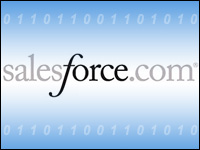
When hosted applications first burst onto the scene — many people tend to forget that Software as a Service (SaaS) was spawned by application service providers, or ASPs, which were common in the mid to late 1990s — they were viewed primarily as one-off applications that were not necessarily mission-critical. Customer relationship management (CRM) — which many firms considered important, but not necessarily core to their operations — was the perfect place to start. Fast forward five years.
Part 1 of this two-part series looks at best practices for selecting and implementing a SaaS system — a hot topic, given the number of new vendors entering the market and the emergence of a slew of new functional areas. However, there is more — much more — that can be done with a SaaS backbone than just a one-off implementation of, say, CRM.
Recent developments in the space give users many more options. Led by market maker Salesforce.com, vendors are providing deeper access to their systems’ inner workings for customization and even development. The growing flexibility allows companies to focus not only on the one-off application, but also on business process integration — an important software and SaaS best practice in its own right.
The Other 25 Percent
To be sure, all of the above flies in the face of warnings discussed in Part 1 of this article: Be wary of SaaS implementations that are too complex. Last year, Gartner predicted that through 2010, 75 percent of complex CRM SaaS deployments would fail to meet enterprise expectations. Indeed, many companies without the internal resources to support complex deployments should shun them.
However, as larger companies increasingly deploy seats in the hundreds or even thousands, exceptions can be made. “Some of what the larger companies are doing definitely falls in the ‘don’t try this at home’ category,” Yankee Group analyst Sheryl Kingstone tells CRM Buyer.
At least, for now.
DIY Development
As more firms become comfortable with the development tools available, smaller companies will be able to handle the complexity. Indeed, many are already managing quite well. “One best practice I would put forth is not to be afraid of the development that goes with a SaaS environment,” says Jack Quinn, founder and CEO ofSavingsbonds.com. The company has been using SaaS for over four years, he told CRM Buyer, after having developed the system in-house.
“What we are doing is so specific, we couldn’t find what we wanted on the marketplace — and we couldn’t afford to outsource the development either,” Quinn explained.
Building it in-house was an unnerving proposition at first, he said, “but I am so glad we pursued that route. The cost structure is partly why our business model works.”
Keep It Simple
Another company with a SaaS-based platform,Kettley, offers its target audience of financial planners a Web-based application for developing sophisticated reports around any number of life events — such as going to college, entering retirement or a planning a wedding. Already, consumer and financial content are searchable based on demographic information, he tells CRM Buyer.
There will come a day when a client asks for a particular granular search option in the product index, expects Jim Connolly, Kettley’s director of software development. When such a request comes in, he will spend about five minutes turning it on.
“With today’s programming environment, it takes about that long to convert a private method into a Web service,” he says. When the company first launched the application, it enabled just about every conceivable method as a Web service. Since then, it has scaled back to 20 or so methods.
“The first lesson we learned is this,” Connolly says: “There is always a trade off with performance when you turn on every bell and whistle possible.”
In fact, right now the company is refactoring its applications to keep the platform as simple as possible. “The danger of over-engineering is greater than the danger of having too simple of a platform,” he concludes.
A Little Introspection
As companies delve deeper into these projects, it is important to keep the end user in mind, Anthony Lye, senior vice president of CRM On Demand for Oracle, tells CRM Buyer. “A lot of interfaces are now in the hands of business users. It is essential that there is a clear understanding of who really owns and administers the application.”
As with on-premise software, a company has to have a clear understanding of who’s on first.

























































Social CRM
See all Social CRM